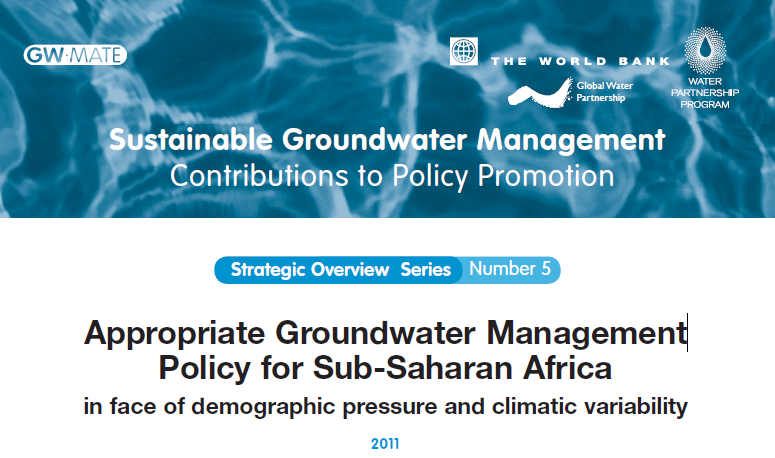Sustainable Groundwater Management Contributions to Policy Promotion-Appropriate Groundwater Management Policy for Sub-Saharan Africa in face of demographic pressure and climatic variability
Groundwater is the critical underlying resource for human survival and economic development in extensive drought-prone areas of Sub-Saharan Africa. Traditionally throughout this region it has been the accessibility of groundwater through dugwells, at springheads and in seepage areas that controlled the extent of human settlement beyond the major river valleys and riparian tracts – and this groundwater was usually developed through community and/or government initiative. The distribution of aquifers is now for the most part reasonably mapped, thanks to long-term programs (during 1965-95) by many governments (supported variously by British, French, German and Dutch technical assistance), and has been well integrated by the IAH/UNESCO/ BGR WHYMAP Africa Groundwater Resources Map (2008). However, quantitative information on aquifer characteristics, groundwater recharge rates, flow regimes, quality controls and use is still rather patchy, although it is improving in some countries as a result of more recent efforts. The general lack of reliable information, however, has tended to mean that in developmental circles groundwater often has been the subject of ‘unreasonable expectation’ or not taken into 'serious consideration'. Many countries in Sub-Saharan Africa are prone to high rainfall variability and severe drought, with severe impacts having been experienced in Ethiopia, Kenya, Burkina Faso, Ghana & Senegal in recent years. Thus better use of groundwater resources to buffer drought impacts in particular, is vital for water (and economic) security. Drought propensity could increase in some scenarios of accelerated climate changes.
